| Forum List | Message List | Search |
|
HamSphere Newsletter Sept 2015
2015-08-31 20:33 |
Admin Registered: 16 years ago Posts: 1,061 |
|
Dear HamSphere Operators Welcome to the Autumn 2015 Edition of the HamSphere Newsletter. September is here and we have a lot of good stuff coming your way so here we go: 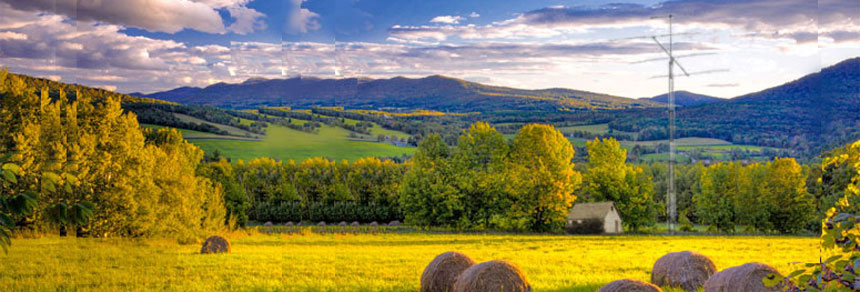 

HamSphere 3.0 News HamSphere 3.0 is our entry level system and used 24/7 by many operators. The Top-10 list shows us that 206 countries have been worked and confirmed on HamSphere 3.0 since the start.  We will continue to run at least one big contest per year on 3.0 and we have many active nets operating on the system. It is good to see that over 1 Million QSL cards have been sent and that we have operators from a total of 258 registered countries. HamSphere 4.0 News We have released version 4.009 which can be downloaded from our HamSphere 4.0 Download page. This new version has many fixes and updates. Some of the new features and fixes include: * Server side Rig Assembly data which allows you to move between computers and keep the rigs and names intact. * Server side setting data storage to keep the settings between computer * Fully Base64 encoded data for multi language support in rigs and settings * Smeter LCD - New scale * Delete / Rename rig templates * Power reduction to 5 watts on CW * TX/RX Latency much improved * Internal Audio buffer handling speeded up * Realistic Bandscope display with 10 times faster updates * Oscilloscope better response to local end remote activity * Based on Java 7 update 80 * Logbook, ability to log 5/9 + 10 * Double click on azimuth in chat to set azi * Multiple Rig templates * Power Button 2 second time out * Control rig via RS232 * Longer call sign box in log book * NEW DATA PROTOCOL One of the most important updates is the "Multiple Rig Templates" which enables the operator to create multiple rigs easy accessible. That in combination with the new Server Side Rig Storage makes the HamSphere 4.0 system fully portable between computers. You can create a transceiver in for example your work PC, save the settings and then bring up the same transceiver in your home with all settings retained.. HamSphere 4.0 Web shop New items in the shop: 2x2x5 Yagi Array Antenna 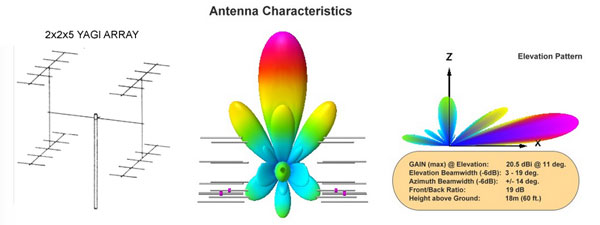 The 2x2 5-element Yagi Stacked Array on Hamsphere has been specially designed from the scratch keeping in mind the special requirements of HamSphere. Unlike what many believe, optimal stacking of antennas to leverage good performance is not a trivial task. Achieving spurious lobe control, good F/B ratio along with controlled takeoff angle and optimal gain are often conflicting requirements. The 2x2 5-element Yagi Stacked Array on Hamsphere has been specially designed from the scratch keeping in mind the special requirements of HamSphere. Unlike what many believe, optimal stacking of antennas to leverage good performance is not a trivial task. Achieving spurious lobe control, good F/B ratio along with controlled takeoff angle and optimal gain are often conflicting requirements.
Volume Slider Panel  Vertical slider panel for Volume, Power, Mic gain, RF-Gain, Vox gain and Vox delay. Vertical slider panel for Volume, Power, Mic gain, RF-Gain, Vox gain and Vox delay.
CODEC Selector  HamSphere 4.0 uses audio codecs by default. Codecs compress the audio to require lesser bandwidth. If you are using digital modes it is virtually impossible to transmit via VOIP systems using encoded audio. HamSphere 4.0 uses audio codecs by default. Codecs compress the audio to require lesser bandwidth. If you are using digital modes it is virtually impossible to transmit via VOIP systems using encoded audio.
By using this Codec Selector you can disengage the audio codecs and transmit undistorted/uncompressed audio over HamSphere. Please note that the bitstream in Codec OFF mode is about 150kbps compared to about 50kbps with codec. Interface Adapter  This is a versatile Interface Adapter plugin for HamSphere 4.0. The purpose of the module is to tie Keyboard Keys to different functions in the HamSphere 4.0 transceiver and plugins. It also has a fully fledged RS232 interface/adapter making connection to external hardware possible. This is a versatile Interface Adapter plugin for HamSphere 4.0. The purpose of the module is to tie Keyboard Keys to different functions in the HamSphere 4.0 transceiver and plugins. It also has a fully fledged RS232 interface/adapter making connection to external hardware possible.
Big PTT Button  Big PTT button as a 216x72 sized plugin for easier transmitter keying. Big PTT button as a 216x72 sized plugin for easier transmitter keying.
Kenwood Skin  This is the new seamless KenWood TS series skin without screws. This is the new seamless KenWood TS series skin without screws.
Mini Statistics  Mini Statistic plugin. Shows Lat, Long, Grid, Verified QSOs, Countries Worked, Points and Longest distance. Mini Statistic plugin. Shows Lat, Long, Grid, Verified QSOs, Countries Worked, Points and Longest distance.
BC Panel  This is a tool for HamSphere 4.0 Broadcasters. It utilizes a powerful 1.2 kilowatts Power Amplifier tuned for 48m as well as an Advertising Message function where the broadcaster can promote its broadcast in the DX Monitor window. In addition it includes a canned private message system such as "Thank you for report" etc which can be sent to listeners on air. This is a tool for HamSphere 4.0 Broadcasters. It utilizes a powerful 1.2 kilowatts Power Amplifier tuned for 48m as well as an Advertising Message function where the broadcaster can promote its broadcast in the DX Monitor window. In addition it includes a canned private message system such as "Thank you for report" etc which can be sent to listeners on air.
This plugin can be downloaded for free, but it only works with a BC account. The BC account costs 30 Euro +VAT per year. Please contact HamSphere Support if you are interested in becoming a broadcaster on 48m. Hex Beam Antenna  Hex-Beam (Hexagonal beam) antenna is a nice and compact multi-band antenna. It is easy to construct, requires less space for deployment and yet provides good performance. Hex-beams can be designed in two different variants. The first is the classical Hex-beam which has two mirrored W-shaped elements per band. It features good gain at nominal bandwidths. Other variant is a broadband version featuring a W-shaped radiator and a open D-shaped reflector. This one has slightly lower gain. Hex-Beam (Hexagonal beam) antenna is a nice and compact multi-band antenna. It is easy to construct, requires less space for deployment and yet provides good performance. Hex-beams can be designed in two different variants. The first is the classical Hex-beam which has two mirrored W-shaped elements per band. It features good gain at nominal bandwidths. Other variant is a broadband version featuring a W-shaped radiator and a open D-shaped reflector. This one has slightly lower gain.
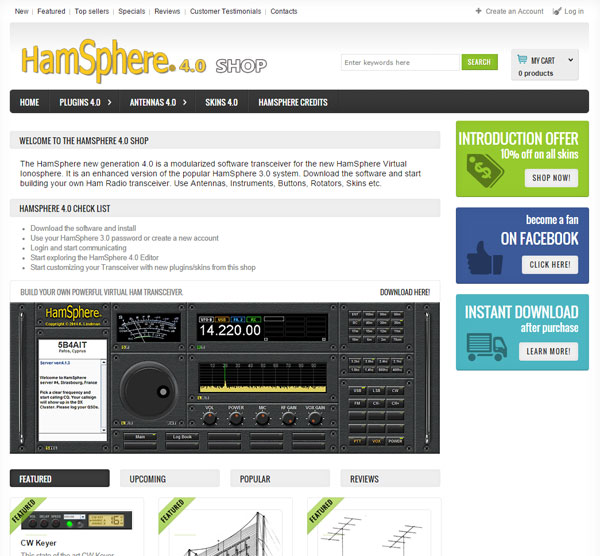
Our Web Shop is open 24/7/365. Here you will find all plug-ins, antennas, skins etc for your HamSphere 4.0 Transceiver. We also have a fully automated Second Hand shop where you can sell your used items. HamSphere 4.0 CW Contest 5 Sept 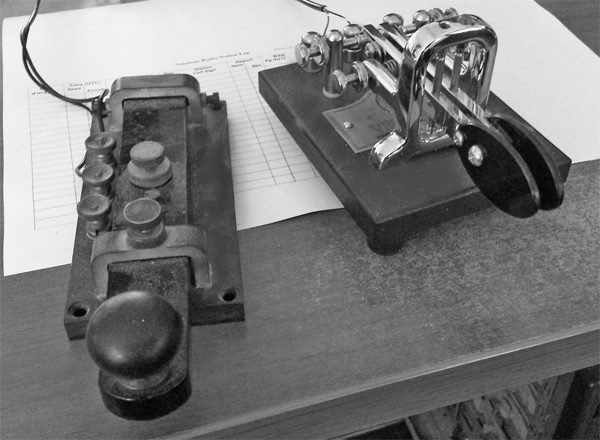
Name: HamSphere 4.0 CW Contest 2015 Description: HamSphere 4.0 first official CW contest. Mode: CW Bands: 160, 80, 60, 40, 30, 20, 17, 15, 12, 11 and 10m Rules: 1 point per QSO. Work each station once per band. Prizes: 1st prize: 50 HS Credits + Certificate 2nd prize: 25 HS Credits 3nd prize: 15 HS Credits Max Power: 5 Watts max above 10 MHz, 10 Watts below Exchange: RST + Sequence number QSO Points: 1 point per QSO Multipliers: Normal band multipliers Start date UTC: 2015-09-05 00:00 End date UTC: 2015-09-05 23:59 Log deadline UTC: 2015-09-08 00:00 Manager SM7NHC Join in advance here: http://hs4.hamsphere.com/contest.php?mode=edit&contest_id=304 RDF Challenge 12 Sept HamSphere is pleased to announce the first RDF (Radio Direction Finding) DX Challenge on HamSphere 4.0 platform. The RDF Challenge will be an 8 day event where several teams will participate and try to locate the physical position of various CW beacons operating from different locations around the world. The participating teams will attempt to find the best fix by homing into the beacons using HF DX Triangulation methods. The participating teams will work as a group with a team leader coordinating operations for each team. The bearings reported by members of the team will be collated, sanitized and analyzed be the team leader in consultation of members to finalize the prospective location of each beacon. The final report will be submitted to HamSphere at the end of the contest. Evaluation will be done by HamSphere and results will be subsequently declared. BEACON SET: There will be five CW beacons transmitting at any point in time during the contest. There will be one beacon on each of the following bands. 40m, 30m, 20m, 17m, and 15m. The beacons will be spread out across the world and across various continents. There locations will be unknown to all HamSphere users. ROTATION OF BEACONS: At the start of the contest on 12th September 2015, all five beacons will become operational. These beacons will transmit continuously (round the clock) for the first 48 Hours. Thereafter, at 00 UTC after 48 hours, all beacons will be randomly relocated to new geographic locations. The set of five beacons will be geographically relocated every 48 hours. Hence each team will have 48 hours to complete homing procedures for each set of beacons. In other words, the 8 day RDF Challenge will give teams an opportunity to locate 5x4=20, a total of 20 beacons through the duration of the contest. The first set of beacons will operate from 00 UTC on 12th Sept to 00 UTC 14th Sept. Next set of beacons will be available from 00 UTC on 14th Sept to 00 UTC 16th Sept and so on. BEACON IDENTIFICATION: Every beacon that is set up for the RDF Challenge will have an anonymous naming structure. The CW beacon identifier will not carry any clue to the location of the beacon. For instance, the first set of five beacons operating on the first two days will be called 40HS12, 30HS12, 20HS12, 17HS12 and 15HS12. The prefix specifies the band and the suffix specified the start date of the beacon. On 14th September when the beacons are switched and locations are changed they will be called 40HS14, 30HS14, 20HS14, 17HS14 and 15HS14 respectively. This will be the beacon identifier structure. Every team should attempt to try and locate as many beacons as possible. As there will be four sets of five beacons spread over 8 days, teams will have an opportunity to locate a total of 20 beacons over the duration of the contest. However, please remember that any set of five beacons will be available only for two days before they are changed. 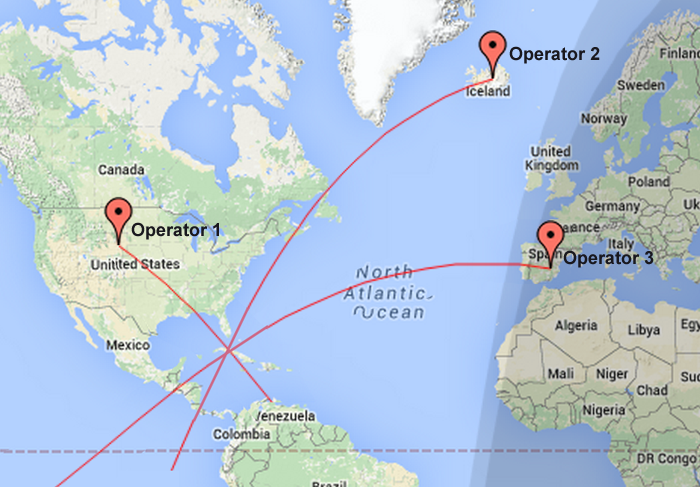 REPORTING AND SCORING: Beacons will be placed around the world with wide global geographic spread. They will be setup at random locations along the countryside and small obscure villages. None of the beacons will be located at any major city. This is to prevent speculation and to ensure that participants depend solely on the acquired readings during RDF. Each team will submit only one consolidated location for each beacon in Latitude and longitude format. The Lat/Lon format should be in decimal degrees (eg. 32.8361 N, 87.3174 E). After the closure of the contest HamSphere will evaluate the error distance of each reported beacon and assign score based on the following tentative formula - 10000/(error-distance[Km]). Total scores of all reported beacons by each team will be aggregated to arrive at the final score. Join the RDF Contest Facebook group: https://www.facebook.com/groups/672109146258046/ The North American Fall Challenge (SSB 40/60) Nov 7th • When: 0000 UTC Saturday Nov 7th 2015 to 2359 UTC Sunday Nov 8th 2015 (48 hours, Sat-Sun) • Where: On HS4 40 and 60 Meter bands, SSB only • Objective: For HS4 operators around the world to contact other HS4 operators in as many U.S. states. Canadian provinces/territories, and countries as possible utilizing only 40 and 60 Meter SSB. • Points Per QSO: 40 Meters – 3 points per QSO / 60 Meters – 5 points per QSO • Multipliers: 1 multiplier for each U.S. state, Canadian province/territory, and non- US/Canadian country worked/confirmed on each 80 and 160 meter band. (Note: While Mexico can be argued to be North America/Latin America/Central America, for the sake of similar contests on Amateur Radio, North American contests have not included XE stations operating in-country as multipliers) • Exchange: RS report plus consecutive serial number • Winners: Top 3 scores in the World, and top 3 scores each continent (North America, Central/South America, Europe, Asia, Africa, Oceania, Antarctica). All other scores are honorable mention. • Prizes: 1st prize: 50 HS Credits + Certificate, 2nd prize: 25 HS Credits, 3nd prize: 15 HS Credits • Contest Log Submission: In accordance with HS4 Contesting Policies. Join in advance here: http://hs4.hamsphere.com/contest.php?mode=edit&contest_id=334 The North American Fall Classic (SSB 80/160) Dec 5th • When: 0000Z UTC Saturday Dec 5th 2015 to 0000Z UTC Monday Dec 7th 2015 • Where: On HS4 80 and 160 Meter Bands, SSB Only • Objective: For HS4 operators around the world to contact other HS4 operators in as many U.S. states. Canadian provinces/territories, and countries as possible utilizing only 80 and 160 Meter SSB. • Points Per QSO: 80 Meters – 3 points per QSO / 160 Meters – 10 points per QSO • Multipliers: 1 multiplier for each U.S. state, Canadian province/territory, and non- US/Canadian country worked/confirmed on each 80 and 160 meter band. (Note: While Mexico can be argued to be North America/Latin America/Central America, for the sake of similar contests on Amateur Radio, North American contests have not included XE stations operating in-country as multipliers) • Exchange: RS report plus consecutive serial number • Winners: Top 3 scores in the World, and top 3 scores each continent (North America, Central/South America, Europe, Asia, Africa, Oceania, Antarctica). All other scores are honorable mention. • Prizes: 1st prize: 50 HS Credits + Certificate, 2nd prize: 25 HS Credits, 3nd prize: 15 HS Credits • Contest Log Submission: In accordance with HS4 Contesting Policies. Join in advance here: http://hs4.hamsphere.com/contest.php?mode=edit&contest_id=324 Latest from the India DX Net 
India DX Net popularly known as IDX Net completed two years of regular operation on HamSphere on 2nd August 2015. IDX Net is a daily net conducted all seven days a week aggregating to 2400 hours of operation. After making a humble beginning two years ago we gradually evolved into a world-wide discussion net. We are now regarded as a source of authentic information on matter related to HamSphere 3.0 and 4.0. Other than this, our strength lies in the vast pool collective wisdom of participating Radio Amateurs. We regularly dwell into topics on HF Radio Propagation, Antennas, Operating practices, Ethics, HF Transceivers, Station equipment setup and various other matters related to Ham Radio. India DX Net can proudly claim to have been influential in motivating and assisting many unlicensed radio enthusiasts to move ahead and acquire an Amateur Radio license. The net has always endeavored to disseminate knowledge and information required to effectively use HamSphere 4.0 and the real HF radio by leveraging the finer nuances of HF propagation, antennas and proper transceiver operating techniques. Although the topics discussed on IDX Net are more relevant to HF radio and HamSphere 4.0, we have consciously chosen to continue our net on HamSphere 3.0. This is a deliberate decision since we believe that new operators prefer to start on HS3 to get a better understanding of HF radio before venturing into HamSphere 4.0. Hence we consider it to be our obligation to the HamSphere community to maintain our presence on HS3. However from time to time we conduct net sessions on HamSphere 4.0 also. Now in our 3rd year of operation, we have launched a special monthly "IDX Net Newsletter" with approval from HamSphere administration. The first issue was released in August 2015. Our newsletter is available on a subscription basis and is mailed to the subscribers on our mailing list. We already have a fairly good subscription base of active users. The first edition of IDX Net Newsletter has been very well appreciated by the subscribers. The September issue is under compilation and is expected to be mailed by the 25th of the month. Those who have missed subscribing so far may do so by clicking on the following URL. http://hamsphere.com/idxnet IDX Net Newsletter is a structured newsletter. Although we will pick and choose some interesting topics for inclusion in each newsletter, this would never be a substitute for the detailed IDX Net live on-air discussions. It is practically impossible to capture approximately 100 hours of live discussion each month in a newsletter. However, every issue of newsletter will carry the following features and much more. IDX Net discussion summary snippets. Frequently Asked Questions on the Net. HamSphere 4.0 Plugin and Antenna reviews. A featured Antenna article every month. HF Propagation fundamentals (various topics). Monthly HF Propagation review and forecast. Tips for effectively operating HS4 and HF Radio. Getting started with HamSphere for new users. HamSphere News and Events. More features to be added in subsequent issues... For live discussions, please come and join us on IDX Net on HS3. We will be pleased to take up any questions or topic of discussion brought up by you. India DX Net operating schedule... Frequency: 28.455 MHz (10m band) Net Time: 13:30 UTC onwards Platform: HamSphere 3.0 (with sessions on HamSphere 4.0) Net Control Station: VU2NSB (Basu) Sahara NET 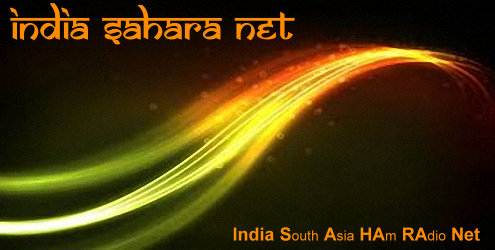 Since 20th July 2015, a new net has been started on HamSphere 4.0 on 40m band. It is called "India SAHARA Net". This is a net that has regional outreach due to the nature of propagation on HF. The objective was to fill the gap and bring together operators from India and South Asia region. However, under present propagation conditions the geographic areas that are covered by SAHARA Net are South Asia, Middle-East Asia, Central Asia, South-East Asia, Australia, New Zealand, Indian Ocean region including Mauritius and several island nations. Stations from all these regions are welcome to the net. Since 20th July 2015, a new net has been started on HamSphere 4.0 on 40m band. It is called "India SAHARA Net". This is a net that has regional outreach due to the nature of propagation on HF. The objective was to fill the gap and bring together operators from India and South Asia region. However, under present propagation conditions the geographic areas that are covered by SAHARA Net are South Asia, Middle-East Asia, Central Asia, South-East Asia, Australia, New Zealand, Indian Ocean region including Mauritius and several island nations. Stations from all these regions are welcome to the net.
The objective of India SAHARA Net is to provide an on-air forum to operators of the region and assist them in getting acquainted with the HamSphere 4.0 platform. The word "SAHARA" in Hindi language (Indian national language) means "Support". True to its name the net intends to provide support to all HamSphere users. The acronym "S.A.Ha.Ra" stands for "South Asia Ham Radio". The propagation limited geographic reach of the net typically covers at least 70 countries on 40m HamSphere HF band including India, Sri Lanka, Pakistan, Bhutan, Nepal, Bangladesh, Maldives, Myanmar, Laos, Cambodia, Vietnam, Thailand, Malaysia, Singapore, Brunei, China, Macau, Hong Kong, Taiwan, South Korea, Japan, Philippines, Indonesia, Mongolia, Asiatic Russia, Timor, Papua new Guinea, Micronesia, Guam, Solomon Is, Australia, New Zealand, Mauritius, Madagascar, Seychelles, Afghanistan, Iran, Iraq, Armenia, Azerbaijan, Georgia, Turkey, Lebanon, Cyprus, Israel, Palestine, Kuwait, Bahrain, UAE, Oman, Yemen, Saudi Arabia, Eritrea, Djibouti, Ethiopia, Somalia, Kenya, Kazakhstan, Kyrgyzstan, Turkmenistan, Uzbekistan, Tajikistan, etc. Initially we are running the net for one hour; however we can always extend it if needed. We cordially invite operators from the above cited geographic regions to try and join the SAHARA Net. We will facilitate inter-station QSO and take any questions to help resolve any problems faced by operators with regard to HamSphere 3 and 4. On this net we will also be discussing other matters related to HamSphere 4.0 which are quite similar in nature to what we encounter in real HF radio. Some of the topics we could cover are... HF Ionospheric and Groundwave propagation. Choosing the right antenna for a contact. Which HF band is suitable at what time of the day. How to predict HF band opening. How to effectively use your rotatable antennas.' How to find azimuth beam headings across the world for DX contacts. How to use the HamSphere Logbook. How to setup HamSphere eQSL card system. How to use the DX Monitor Cluster. What are HamSphere Award System ...And many other topics brought up by participants. India SAHARA Net operating schedule... Frequency: 7.023 MHz (40m band) Net Time: 12:30 UTC (6 pm IST) onwards Platform: HamSphere 4.0 Net Control Station: VU2NSB (Basu) Hamshere 60 Meter North American net 
The 60 meter net was established by two Canadian stations in Ont . Canada 9HS158 Dean and 9HS299 Terry. They were old friends and found each other on Hamsphere 4.0 but had a hard time establishing reliable connection because of their close proximity. It was recommended that they use NVIS ant on 60 meter which resulted in a reliable connection. They decided to meet on 60 Meters every day @ 00:00UTC to discuss their daily activities. Soon several stations discovered this daily contact and asked to join in a round table format of their activities and solutions to technical issues using HS4 software. This round table format evolved into a formal net with 9HS299 as Net control. KC3AZT Steve would be an alternate controller on days 9HS299 was unavailable. This arrangement continued for several weeks with up to 15 stations checking in During the Monday to Thursday net. KC9HH Harold and 2HS2020 Rich and 2HS3927 Jon act as net controllers on this formal round table format discussion net at this time. The net runs Monday through Thursday @ 00:00 UTC on 60 Meter Band @ 5.330 Mhtz. The net is active for 1:30 Minutes with participation by several North American .Central American and Canadian stations do too the propagation patters on the 60 Meter band. Many stations participate on a daily basis and several technical issues in addition to daily activities are discussed. Any station is encouraged to join the net and enjoy the information exchange that takes place. See you on the 60Meter net soon. Harold Schofield KC9HH North American 160m Net By K8AYB This is a formal Traffic Net designed to promote use and enjoyment of the 160 Meter band on HamSphere 4. Its purpose is to increase operator training and proficiency in delivering and receiving radio traffic in the form of Callsigns, Signal Reports, Names,Antenna, QTHs, and official business for the Net. Confirmations and accuracy required. Propagation models suggest that receptivity is restricted to North American States, Canadian Provinces and perhaps Central American countries at certain times of the year. This is a fast-paced, structured net. Please restrict your content to HamSphere 4 North America 160 Meter Net matters. 
18 group By Tina, M1CPH 18 Group meets on HamSphere 3.0 frequency 18155 kHz Time: 19.00 hours – 20.00 hours UTC Monday, Wednesday, Thursday, Saturday and Sunday. 
The 18 was started from a formal chat amongst a few members, and we came up with the name in connection with the frequency we use. We welcome listeners and those who wish to participate, and we assist anyone who joins the group with advice on HamSphere 3 and 4. We give advice on tech information in regard to Radio’s, HamSphere and computer issues. We also encourage other stations to visit the other nets such as the India DX Net. We have also a web site to include information on HamSphere, and this includes HamSphere Rules, Code of Conduct amongst other information. We are developing workshops on HamSphere 3, and the first one will be on how to create, design and send a qsl card. We control the net well with organised Net Controllers who receive updated training from M1CPH, and we hold a Net Controllers meeting on another source so we can review any updates and changes. We look forward to meeting and greeting everyone. Join our facebook group https://www.facebook.com/groups/1000090346679276/ M1CPH Tina A MID-TRIP REPORT, by K3JZ I am still on the road on this Transcontinental DXpedition across North America on HS4. It started with the need to move my son Christopher and what would be needed to outfit his dorm room at Miami University to Oxford, Ohio for Chris’ freshman year. My XYL Marjorie (N7SOF) came along to keep things honest and I activated my APRS tracker to document the route. It can be seen at http://aprs.fi/ 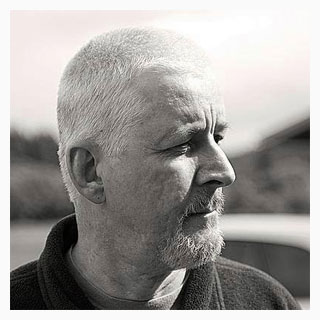 I just sat down and crunched all the logs from each of the accounts so far, and I'm averaging about 75 contacts a day. Ten people have earned their 80m Awards by working the states activated during this "Transcontinental DXpedition", including a station outside North America. Several more will complete the 80m Award before we're back home. If the accounts were consolidated into a single log, I would have worked 25 unique states for an 80m Award, worked a dozen countries, and obviously had a 250QSO and 500QSO Activity Award....and all on an IDC antenna. Don't discount the efficiency of the discone! I just sat down and crunched all the logs from each of the accounts so far, and I'm averaging about 75 contacts a day. Ten people have earned their 80m Awards by working the states activated during this "Transcontinental DXpedition", including a station outside North America. Several more will complete the 80m Award before we're back home. If the accounts were consolidated into a single log, I would have worked 25 unique states for an 80m Award, worked a dozen countries, and obviously had a 250QSO and 500QSO Activity Award....and all on an IDC antenna. Don't discount the efficiency of the discone!
Timing is everything, and the operating window has been tiny: no more than 5 hours of operation, all during periods of darkness wherever I was located. Had I been able to slow our travels and spend perhaps two days in any state, I'm sure many more DX stations could have been worked, including spending some time on HS3 for that user community. Average sleep per night? 5 hours. Preparation is everything, and Murphy managed to appear more than once. My primary notebook computer lost its screen display. The secondary notebook ingested a Win10 update and attempted to install it while we were sleeping, "bricking" itself when the battery failed (turning off the lights had also turned off the wall receptacle). Even nature intervened: an M-Class Flare brought the noise floor on 80m to S-5 for two evenings. I won't count the number of HS4 server burps everyone enjoyed. So far: ID, MT, WY, SD, IA, OH, KY, NY, VT, ME. South Dakota generated the most activity to date. We still have more states to activate: RI, CT, NJ, DE, MD, MO, KS, CO, UT, NV, OR. Before I'm done, I will have driven 15,000km. So why do it? Why not just kick back and spend more time touring and less time operating on Hamsphere 4? Why not just operate the K3JZ account and keep chasing more DX on CW (my favorite ham pastime)? Well, that wouldn’t help “grow” the community of users. I insist that we need more operators on HS 4.0…learning about antenna theory, wave propagation, and net operations under less than ideal conditions. HS4 is the adjunct that can fuel the regrowth of the Amateur Radio Service, defined in the US as: (a) Recognition and enhancement of the value of the amateur service to the public as a voluntary noncommercial communication service, particularly with respect to providing emergency communications. (b) Continuation and extension of the amateur's proven ability to contribute to the advancement of the radio art. (c) Encouragement and improvement of the amateur service through rules which provide for advancing skills in both the communication and technical phases of the art. (d) Expansion of the existing reservoir within the amateur radio service of trained operators, technicians, and electronics experts. (e) Continuation and extension of the amateur's unique ability to enhance international goodwill. 73, K3JZ 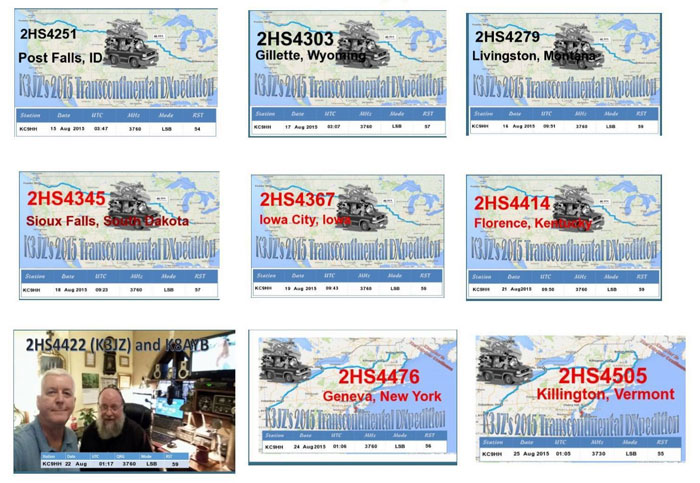 DXpedition Reports and Special Event Stations by Martin 161HS363 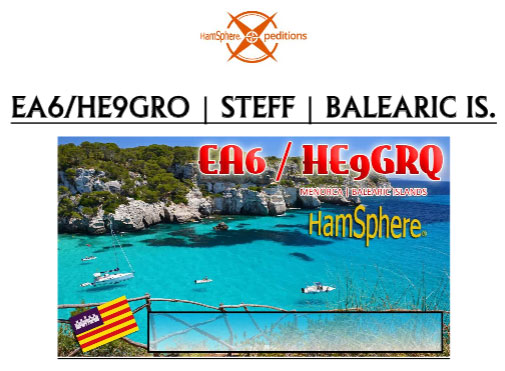
EA6/HE9GRQ Steff has activated new country on Hamsphere - Balearic Islands !!! He was QRV from Menorca (Balearic Island) from Saturday April 25th until Sunday May 3rd. He worked on both of versions. Here are the details of the expedition: HS3: Total confirmed World Countries / QSOs: 28 / 49 Total confirmed EU Countries: 16 Total confirmed US States: 5 Total confirmed CA Provinces/Territories: 1 HS4: Quick statistics # Total Points: 2128 Total QSO:s: 254 Total Countries: 50 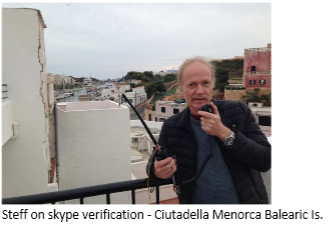
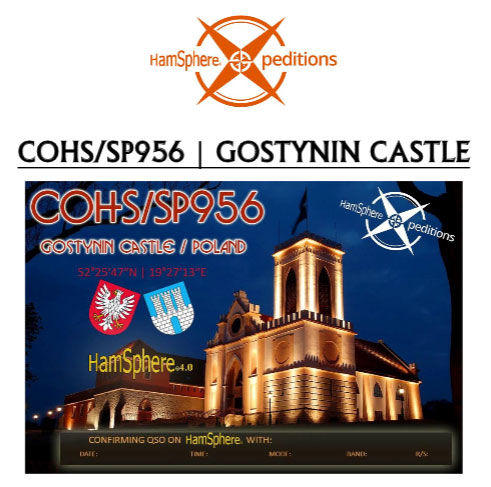
On 2nd of May, for 2 hours only, Martin 161HS363 activated the Castle of Gostynin (COHS / SP956) on Hamsphere 4. He started at 08.00 UTC until 10:00 UTC. Handling the pile up, Martin was trying to promote the HAM Code of Conduct on the HS system. Unfortunately the net connection was terrible that day. He made just a few QSOs Here are the details of the expedition: HS4 Quick statistics # Total Points:196 Total QSO:s: 23 Total Countries: 11 Martin 161HS363 is DX Coordinator for DXpeditions, JOTA - JOTI, special callsigns and other activations. Please PM him at http://www.hamsphere.com/pm.php?5,page=send,to_id=648406 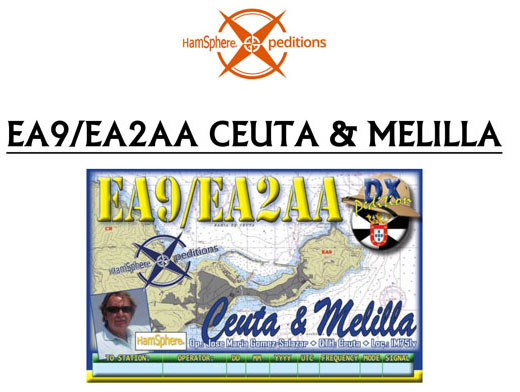
This was the first time we heard EA9 Ceuta & Mellila on the bands. It was a very long awaited expedition performed by our known DX man Jose EA2AA between 12-18 May. Jose worked mostly on HS4, but he made opportunity for HS3 users as well. He prepared many of beautiful QSL cards. Here few details of activation for both of versions: HS3: Total confirmed World Countries / QSOs: 35 / 71 Total confirmed EU Countries: 20 Total confirmed US States: 1 Total confirmed CA Provinces/Territories: 3 HS4: Total Points: 2965 Total QSO:s: 399 Total Countries: 68 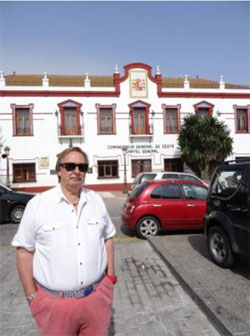
José EA2AA 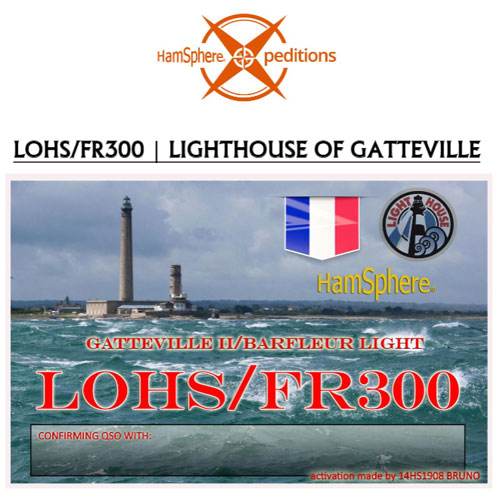
Bruno 14HS1908 activated the Lighthouse in GATTEVILLE on 18/05/2015 -23/05/2015 Here are the details of the activation: HS3: Total confirmed World Countries / QSOs: 17 / 27 Total confirmed EU Countries: 9 Total confirmed US States: 1 Total confirmed CA Provinces/Territories: 1 HS 4: Total Points: 652 Total QSO:s: 98 Total Countries: 31 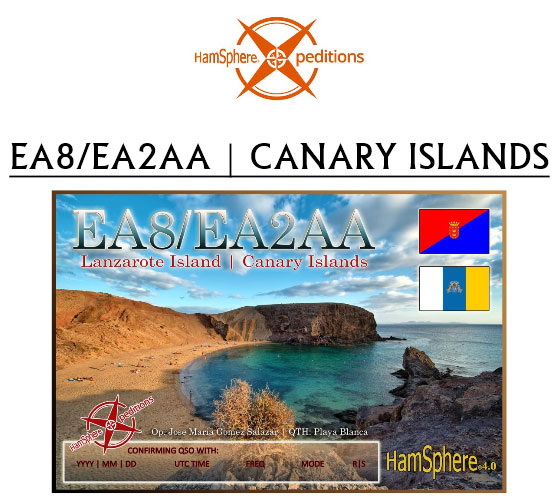
EA2AA José went again on an expedition, this time to EA8/EA2AA Canary Islands which is a new country on HS. Jose worked from Canary Islands between 16th and 26th of June 2015 on all bands both of versions. Here are the details of the activation: HS3: Total confirmed World Countries / QSOs: 40 / 87 Total confirmed EU Countries: 22 Total confirmed US States: 8 Total confirmed CA Provinces/Territories: 2 HS4: Quick statistics # Total Points: 2490 Total QSOs: 306 Total Countries: 58 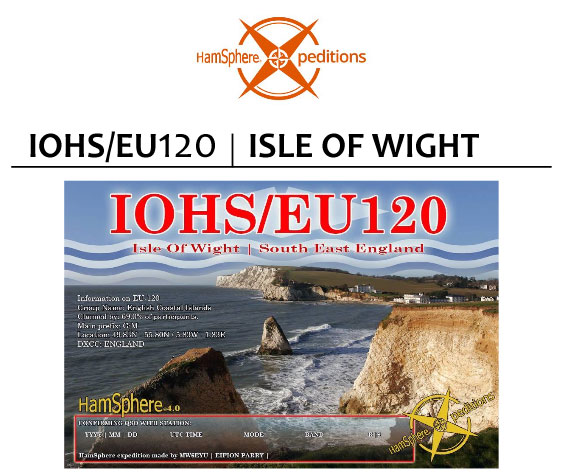
Between 22.06 - 26.06 MW6EYU Eifion activated IOHS/EU120 station from Isle of Wight on both of versions. On this occasion we prepared a special QSL card. HS4: Quick statistics # Total Points: 833 Total QSOs: 120 Total Countries:41 Contest Results HamSphere 4.0 CIS & Baltic May Day contest Category 1 World Wide Contest held: HamSphere 4.0 2015-05-02 00:00 through 2015-05-02 23:59 In category 1 participants from 16 Regions CIS/Baltic compete for CIS/Baltic and world wide QSOs. Participants from regions as follows: Russia UA 50 RU, Armenia EK 301 AM, Azerbaijan 4K 303 AZ, Estonia ES 304 EE, Georgia 4L 306 GE, Kaliningrad UA2 307 1K, Kazakhstan UN 308 KZ, Kyrgyzstan EX 309 KG, Latvia YL 310 LV, Lithuania LY 311 LT, Moldova ER 312 MD, Tajikistan EY 313 TJ, Turkmenistan EZ 314 TM, Ukraine UR 315 UA, Uzbekistan UK 316 UZ, Belarus EW 317 BY Multipliers are valid for QSOs with CIS/Baltic stations only. Congratulations to RX6AQO, Vladimir who won HS4.0 HamSphere 4.0 CIS & Baltic May Day contest Category 1 with 53341 points and worked as many as 40 CIS Multipliers. Full results here: http://www.hamsphere4.com/64_36274_read.html HamSphere 4.0 CIS & Baltic May Day contest Category 2 HamSphere 4.0 CIS & Baltic May Day contest Category 2 World Wide Contest held: HamSphere 4.0 2015-05-02 00:00 through 2015-05-02 23:59 In category 2 participants from all NON CIS/Baltic regions compete for CIS/Baltic and world wide QSOs. Valid CIS/Baltic countries/regions follows: Russia UA 50 RU, Armenia EK 301 AM, Azerbaijan 4K 303 AZ, Estonia ES 304 EE, Georgia 4L 306 GE, Kaliningrad UA2 307 1K, Kazakhstan UN 308 KZ, Kyrgyzstan EX 309 KG, Latvia YL 310 LV, Lithuania LY 311 LT, Moldova ER 312 MD, Tajikistan EY 313 TJ, Turkmenistan EZ 314 TM, Ukraine UR 315 UA, Uzbekistan UK 316 UZ, Belarus EW 317 BY Multipliers are valid for QSOs with CIS/Baltic stations only. Congratulations to 178HS411, Evlogy who won HS4.0 HamSphere 4.0 CIS & Baltic May Day contest Category 2 with 46453 points and worked as many as 40 CIS Multipliers. Full results here: http://www.hamsphere4.com/64_36294_read.html HamSphere 4th of July Contest 2015 HS4 Here are the results from the "HamSphere 4th of July Contest 2015 HS4" that was held 2015-07-04 during 24 hours. Congratulations to Andy, RA4ZA who reached a stunning 69732 points by working 43 countries in 298 valid QSOs making 233 multipliers. Well done indeed! Here are the winners: 1st Prize: Andy, RA4ZA, Russian Federation with 69732 points wins 60 HS Credits + Ant. Congratulations! 2nd Prize: Andy, SP2DNI, Poland with 63714 points wins 30 HS Credits + Ant. Congratulations! 3rd Prize: Branko, YU4DX, Serbia with 57780 points wins 15 HS Credits + Ant. Congratulations! 4th Prize: Dainius, M0HMJ, United Kingdom with 55622 points wins 10 HS Credits. Congratulations! 5th Prize: Alexander, RA9CUH, Russian Federation with 49590 points wins 10 HS Credits. Congratulations! 6th Prize: Andrey, 303HS167, Azerbaijan with 39884 points wins 10 HS Credits. Congratulations! 7th Prize: Riccardo, 1HS6431, Italy with 32028 points wins 10 HS Credits. Congratulations! 8th Prize: Alex, RA4PB, Russian Federation with 28356 points wins 10 HS Credits. Congratulations! 9th Prize: Chris, 50HS5873, Russian Federation with 25938 points wins 10 HS Credits. Congratulations! 10th Prize: Ravi, VU2RVE, India with 24840 points wins 10 HS Credits. Congratulations! Full results here: http://www.hamsphere4.com/64_37354_read.html HamSphere Testimonials 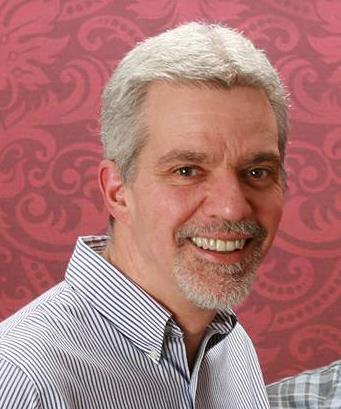 I was first licensed as an amateur radio operator in the U.S. in 1976. As often happens, though, job, family, moving, and life got in the way of the radio hobby and I became inactive in the late 1990's. I was first licensed as an amateur radio operator in the U.S. in 1976. As often happens, though, job, family, moving, and life got in the way of the radio hobby and I became inactive in the late 1990's.
But in March of last year I became a beta tester for HamSphere 4.0. The ultra realism of HS4 awakened the DX'er in me and my interest in real Ham Radio was rekindled. I bought a used HF rig and got back on the air. My interest in real radio was so alive that I decided to finally pursue my Extra Class license, after 38 years as a General Class license holder, and passed the test in August. I have an active HF station on real radio again, but I still operate as much if not more on HamSphere 4.0. HS4 is an incredible experiment in ultra-realistic simulation of ham radio, including propagation and antenna characteristics. I can afford to play with simulated antennas on HS4 that I could never afford on real radio. I can learn so much more about propagation on all the bands. I can continue to meet and talk to the friends I have made on HS4 and participate in the contests, awards, and teaching activities. HS4 is a path to stay on ham radio for some long-time hams who can no longer be on real HF. It is also a path to becoming licensed for those who just needed some experience "on the air" to give them the motivation they needed. Thank you HamSphere 4.0! Mike, WB7ECW DX Countries Statistics 
Hear are some examples of DX countries that we've heard on the HamSphere 3.0 bands over the past months: CAMBODIA, CAYMAN ISLANDS, ZIMBABWE, DOMINICA, ANDORRA, MARTINIQUE, SAINT KITTS AND NEVIS MOZAMBIQUE, CAPE VERDE, UGANDA, CAMEROON, NIGER, ANGOLA, PAPUA NEW GUINEA CEUTA AND MELILLA, CONGO, SOMALIA, MARSHALL ISLANDS, ZAMBIA, REPUBLIC OF SOUTH SUDAN MALAWI, MADEIRA ISLAND, BOTSWANA, KIRIBATI, VANUATU, SAN ANDRES AND PROVIDENCIA GRENADA, EASTER ISLAND, TRISTAN DA CUNHA AND GOUGH ISLAND, GREENLAND, SARDINIA Here are a few examples of exotic DX countries that have been picked up on HamSphere 4: OMAN, MONTSERRAT, EL SALVADOR, CHRISTMAS ISLAND, BRUNEI, LIBERIA, WALLIS AND FUTUNA ISLANDS UZBEKISTAN, GABON, SAN ANDRES AND PROVIDENCIA, NORFOLK ISLAND, VIET NAM HamSphere 4.0 The 48 Meter BC Band News By Steve KC3AZT The 48 meter BC Band has been quiet active since the last newsletter. Multiple broadcast have been found most active during the later evening hours in Europe and also State side usually starting Friday’s leading through Sunday evenings. Popular broadcast stations such as Radio EMR, (06.265MHz), Radio 1975, (06.245MHz), Radio SQRA, (06.290MHz), Radio NRG (06.230MHz) include surprise appearances from the popular station Radio ULM, (06.260MHz) playing his Polka Music which everyone loves to hear! Dave, Radio NRG always keeps the band hopping with his custom dance room party beats including that super DJ style upbeat which gives one the impression that you’re standing outside waiting to enter a hot Friday night English dance pub! 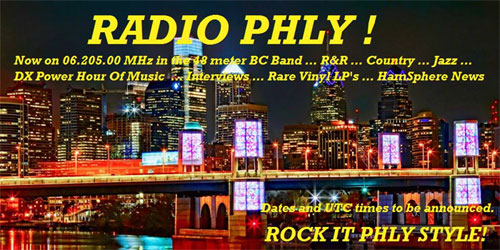 While swinging over into the States we can find myself, Radio Phly, (06.205MHz) cranking out some good old R&R fading into Country Music. Once in a while going into some funky electronic tunes covering my collection of rare old vinyl albums transferred into a MP3 file format. It sounds awesome when you can hear the stylus of the turntable needle hit the vinyl with that unique crackling of sound when contacted. Be sure to look for my Phly News 15 minute segments which I cover that months latest happenings for the HamSphere 4.0 platform including one of my Tip Of The Day segments. While swinging over into the States we can find myself, Radio Phly, (06.205MHz) cranking out some good old R&R fading into Country Music. Once in a while going into some funky electronic tunes covering my collection of rare old vinyl albums transferred into a MP3 file format. It sounds awesome when you can hear the stylus of the turntable needle hit the vinyl with that unique crackling of sound when contacted. Be sure to look for my Phly News 15 minute segments which I cover that months latest happenings for the HamSphere 4.0 platform including one of my Tip Of The Day segments.
Going up the band we can find the popular Radio PENY, (06.275MHz). Bob does a nice job broadcasting hard to find Country Music, his taste and likings speak for itself with his knowledge of hard to find good family music. Bob also broadcast a segment about the current sun spot conditions which is always interesting. There are a few stations that I have left out until we gather further information on when and if they desire to continue broadcasting. If you like to find more information and participate one on one with the broadcasters then I like to invite you to join our official HamSphere BC Band FaceBook group, simply click on the following link and ask to join. https://www.facebook.com/groups/djin.in.the.bc.band/ Here is something very interesting that Kelly Lindman had posted back in May 2015 on the HamSphere DJin In The BC Band group page. “Here's some time-barred trivia from the past. On BC 6210 kHz you can now find a station called PRSQ which was operating on 48 meters in the late 90's using a converted Kenwood TS-520 with 100 watts output using an inverted dipole. The transmitter was located on the island of "Mörkö" in the Swedish archipelago. The audio recording re-transmitted on HS4 6210 kHz was recorded live on 48m by one of the most avid DXers in the history using synchronized AM and a 400m Beverage antenna near the polar circle in Sweden. The tape was sent to me anonymously via Holland in 1998 and it clearly shows the wonderful AM conversion of that transmitter which was just a simple pre-amp modulator relying on the linearity of the twin work horses 6146B.” … Wow! This is definitely some great material for sure so if you haven’t listened to the broadcast yet you need to take a look. Finally a word about pleasurable listening, since the new plugin COD1 has come out most broadcasters have been faithfully using it to their advantage. There is no doubt an immediate increase of transmitted sound quality to put it bluntly. As an avid listener using this plugin is a must. Remember to click on the “OFF” portion of the plugin which is in a “now activated” state. Adding any equalizer from the audio output to your speakers will even take this to a new higher level. You may also use any of your purchased forward directional antennas from any HF band. In order to accomplish this simply click on the “A” (All available antennas) towards the bottom of your antenna selector plugin. As we can now see the background has a light brownish look, now we can scroll down and look for our purchased antenna being highlighted in a reddish color. By double clicking on the antenna we can now see that the small LED green light is activated within the antenna rotator plugin. The antenna is now directly hooked in with your HS 4.0 Radio, however if it is an out of band antenna it is only good for receiving but it should give you somewhat a much better forward type gain. If the antenna is in green this means that it is built for the 48 meter band. Sal, TI2SSO has recently discovered that his 2x2 Stacked Array Yagi set is extremely powerful as far as pulling in week signals within this band. Hope to see you soon on the 48 meter BC Band and as always good listening from Steve, RADIO_PHLY. 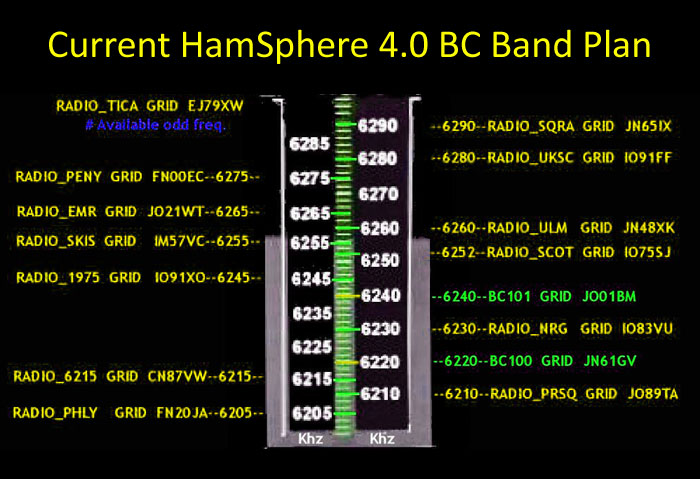 Download the software Download HamSphere 3.0 for Windows, Linux and Mac Download HamSphere 4.0 for Windows, Linux and Mac Use the Support Ticket System We have a 24-hour support ticket system where you can get support regarding anything about HamSphere. * Changing call signs * Technical problems * Suggestions * General questions, etc. http://www.hamsphere.com/support How to Subscribe The HamSphere annual subscription costs 30 Euro, that is about $40 USD and includes all our features even the iPhone and Android apps. It also includes the standard 4.0 transceiver. Click here if you are interested in subscribing to HamSphere and get all features Lost Password How do I get a new password? We get this question often. Here are two links to fix this. Click here to get a new password Or Click here to set your own password If it still doesn't work, please contact our support and we will manually give you a new password. HamSphere on Twitter and Facebook We have now received over 24700 recommendations on Facebook – Thank you FB users. And Thank You to over 4800 followers on Twitter. Super!! Follow HamSphere 4.0 on facebook 

And our Facebook group Thank you for your interest and your continued Support. Kelly 5B4AIT HamSphere Founder |
|
© HamSphere AB, All Right Reserved.